Most Victorian public sector employees agree that they ‘know what behaviour constitutes corruption’.
Eighty-nine per cent agree that they ‘know what behaviour constitutes corruption’, with 48 per cent strongly agreeing.
This result is significantly higher compared to the findings from the 2016 survey of Victorian public sector employees (79% strongly agree + agree).
Victorian public sector employees are more likely to believe corruption is a problem in the state of Victoria compared to within their specific workplace.
Perceptions that corruption happens and is a problem in Victoria, as well as within the workplaces of survey participants, have increased significantly since 2016.
In 2022, six in 10 employees (61%) agree that corruption is a problem in Victoria, fewer (20%) agree that it is a problem in their workplace. The exception is emergency services and transport workers, where significantly more agree that corruption is a problem in their workplace (47% and 34% respectively).
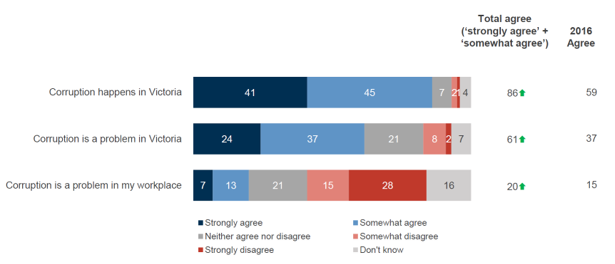
Corruption or misconduct risks facing the public sector include conflicts of interest and privacy breaches.
Victorian public sector employees were asked to nominate the most significant corruption or misconduct risks facing their organisation. A little over half of respondents identified at least one risk. The key risks identified included a conflict of interest, bribery or fraud, or political interference. Comments also focus on breaches of confidentiality, impropriety in recruitment and procurement, as well as bullying and harassment.
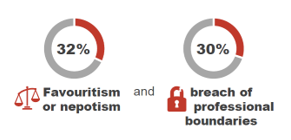
Close to a third (32%) of Victorian public sector employees say there is a ‘high risk’ of breaching professional boundaries or playing favourites at work. Managers are more likely to believe the risk of these behaviours occurring to be higher. This is also the case for emergency services and front-line workers.
Overall, the perceived likelihood or risks associated with breaches of professional boundaries has increased significantly in 2022 (74% - medium or high risk) compared to in 2019 (67%).
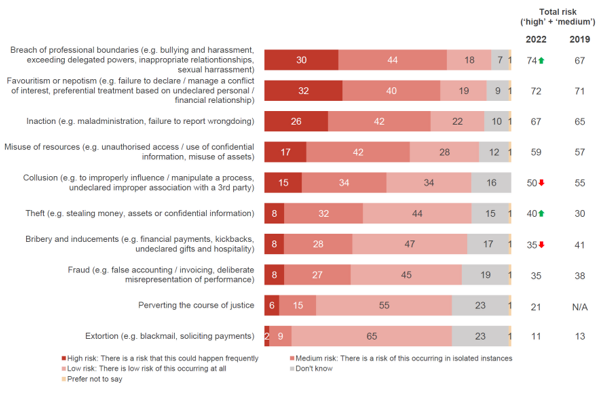
Human resources management is the function within an organisation where the risk of improper behaviours is considered greatest (17% consider it is a ‘high risk’). However, perceived risks associated with asset management have increased in 2022 (30% ‘high’ or ‘medium’ risk) compared to 2019 (25% ‘high’ or ‘medium’ risk).
Most Victorian public sector employees have not suspected or observed improper behaviours.
Favouritism or nepotism is the improper behaviour that Victorian public sector employees were most likely to suspect occurred within their organisation in the past 12 months (28%), while more than one in five employees (22%) claim to have personally observed a breach of professional boundaries. Between 77 and 86 per cent of Victorian public sector employees reported they neither suspected nor observed many other serious forms of improper behaviour within their organisation, such as fraud, theft, bribery, or extortion.
Employees working within some sectors of the Victorian public sector reported a significantly higher incidence of ‘suspecting’ or ‘personally observing’ each of the improper behaviours: employees working in emergency services, health (except for collusion) and front-line service delivery workers.
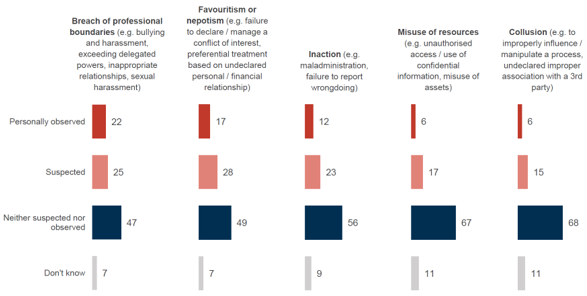
Risks also lie in dealings with business.
A little over half of Victorian public sector employees (54%) think there is a ‘medium’ or ‘high’ risk of employees in procurement being offered gifts from suppliers worth over $50. Half (49%) see the same level of risk in gifts being accepted.
Employees in corporate support or policy/ program development, as well as employees working within metropolitan Melbourne, are significantly more likely to consider the risk to be higher.
The perceived risk that public sector employees would ask for a gift is much lower (27% ‘medium’ or ‘high’ risk).
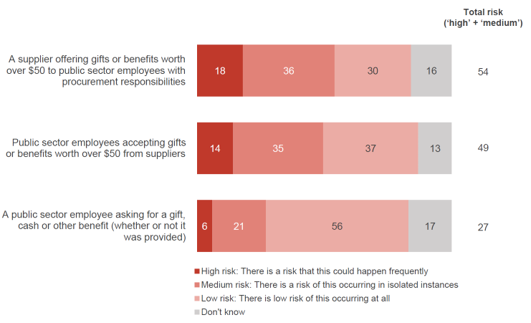
Perceptions of the ethical culture of the organisation have not changed amongst Victorian public sector employees compared to 2019.
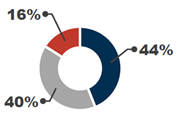
In 2022, most Victorian public sector employees (84%) describe the ethical culture of the organisation as ‘strong’ (44%) or ‘moderate’ (40%). The remaining 16 per cent rate the ethical culture as ‘weak’, rising to 44 per cent among those in emergency services.
By comparison, 85 per cent rated the ethical culture as ‘strong’ or ‘moderate’ in 2019.
The ethical culture (be that ‘strong’ or ‘weak’) is perceived to ‘come from the top’ and is underpinned by management.
Victorian public sector employees identified reasons for how they rated the ethical culture at their organisation. Among those who feel their culture is ‘strong’, comments often mention transparency, open discussions, and modelling of the required behaviours by management. Those who rate the ethical culture of their organisation as ‘weak’ describe management adherence to ethical values or response to problems as ‘lip service’.
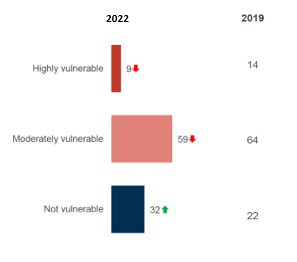
Graph 6. Organisational vulnerability to corruption and misconduct (%)



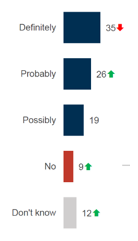
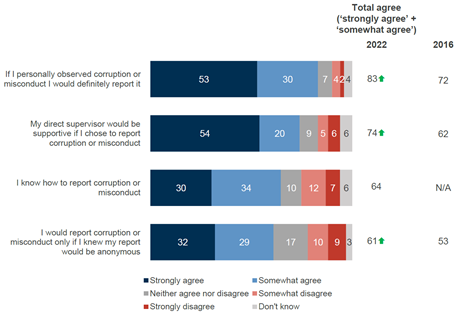
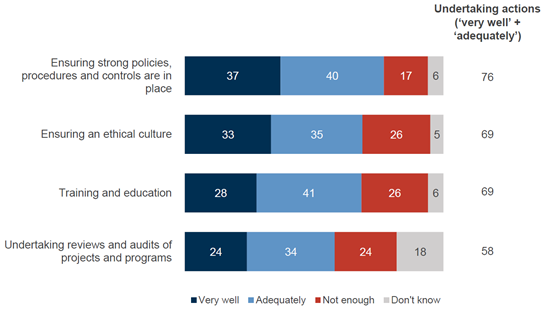
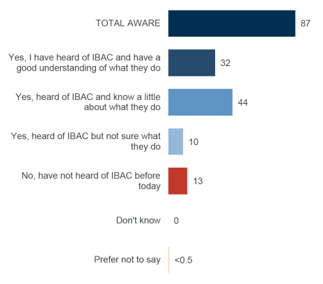
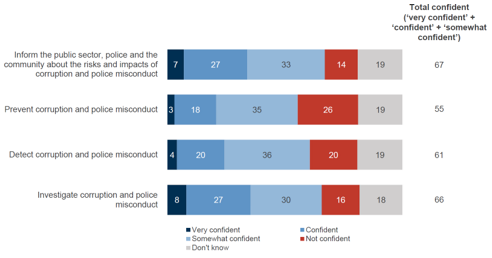

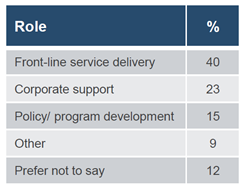 Sex
Sex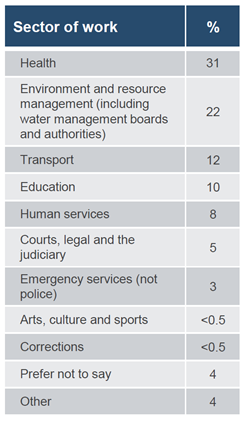 Years of service
Years of service